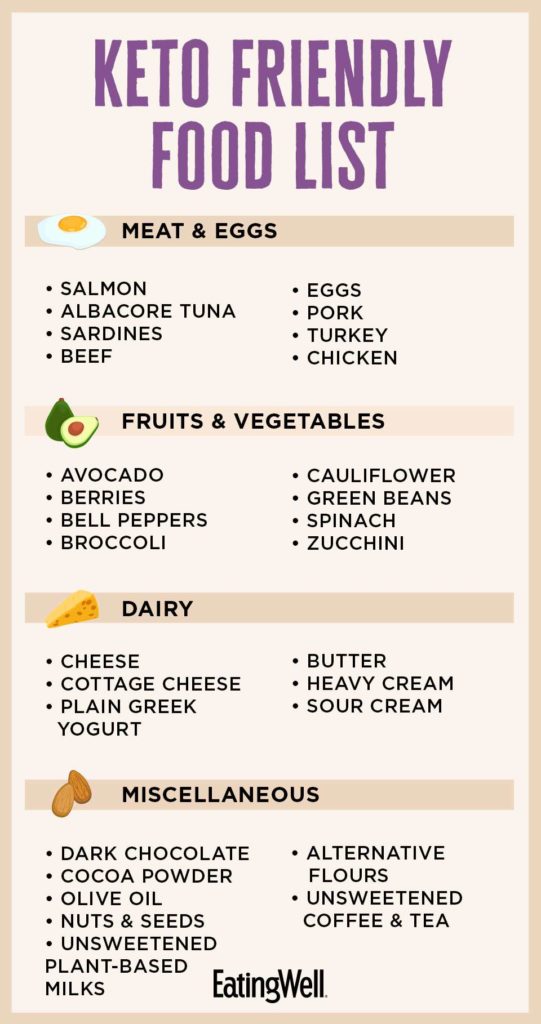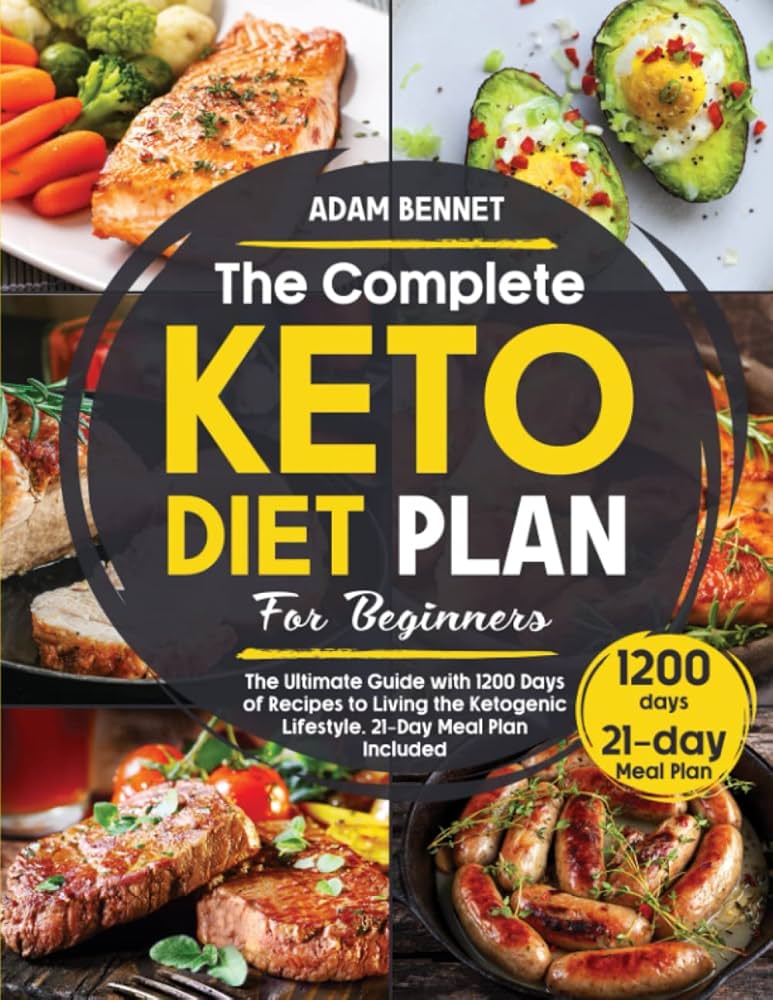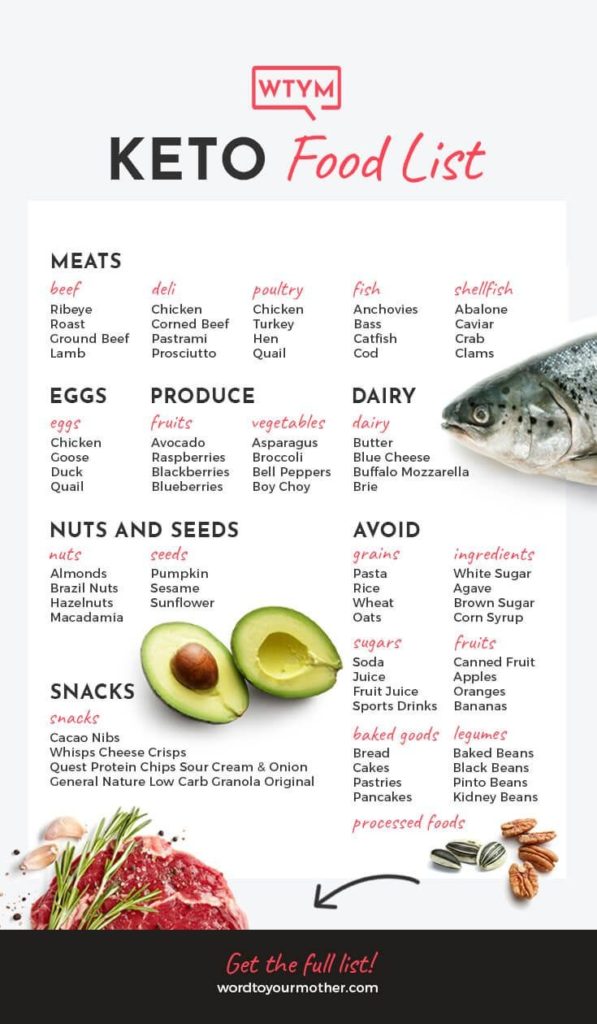Have you been thinking about trying out the keto diet but feel overwhelmed by all the information out there? Don’t worry, we’ve got you covered! In this ultimate guide to the keto diet plan, we’ll break down everything you need to know to get started on your keto journey. From understanding what the keto diet is all about to tips for meal planning and staying on track, we’ve got you covered. Let’s dive in!

This image is property of www.eatingwell.com.
What is the Keto Diet?
So, you’ve heard about the keto diet, but what exactly is it? Well, the keto diet is a high-fat, low-carb eating plan that aims to put your body in a state of ketosis. Ketosis is a metabolic state where your body burns fat for energy instead of carbohydrates. By drastically reducing your carb intake and increasing your fat intake, you can train your body to become more efficient at burning fat.
How Does the Keto Diet Work?
When you restrict your carbohydrate intake, your body turns to fat for fuel, producing molecules called ketones. These ketones are then used by your body for energy, leading to weight loss and other health benefits. By following the keto diet, you can shift your metabolism to prioritize burning fat instead of carbs.
Benefits of the Keto Diet
The keto diet has gained popularity for its numerous health benefits beyond just weight loss. From improved mental clarity to better blood sugar control, there are plenty of reasons to consider giving the keto diet a try.
Weight Loss
One of the most well-known benefits of the keto diet is weight loss. By reducing your carb intake and increasing your fat consumption, you can kickstart your body’s fat-burning abilities. Many people have found success in losing weight quickly and efficiently on the keto diet.
Improved Energy Levels
When your body is in ketosis, you’ll experience more stable energy levels throughout the day. Instead of relying on glucose for energy, which can lead to energy crashes, your body will be burning fat for a more sustained source of fuel. This can lead to improved focus and productivity throughout the day.
Better Blood Sugar Control
The keto diet has been shown to help stabilize blood sugar levels, making it a great option for those with diabetes or insulin resistance. By reducing your carb intake and focusing on fats and proteins, you can reduce blood sugar spikes and improve insulin sensitivity.
Getting Started on the Keto Diet
Ready to give the keto diet a try? Here are some steps to help you get started on your keto journey.
Calculate Your Macros
To follow the keto diet effectively, you’ll need to calculate your macros, or macronutrients. Your macros consist of the percentage of calories you should be getting from fats, proteins, and carbohydrates. A typical keto diet consists of around 70-75% of calories from fat, 20-25% from protein, and 5-10% from carbohydrates.
Here’s a simple breakdown of what your daily macronutrient intake might look like on the keto diet:
| Food Group | Grams per Day |
|---|---|
| Fats | 111-166g |
| Proteins | 75-111g |
| Carbohydrates | 20-50g |
Clean Out Your Pantry
To set yourself up for success on the keto diet, it’s essential to clean out your pantry and fridge of any high-carb foods that might tempt you. Get rid of sugary snacks, bread, pasta, and other carb-heavy items. Stock up on keto-friendly foods like avocados, nuts, seeds, meats, and low-carb vegetables to have on hand for meal prep.
Start Meal Planning
Meal planning is key to staying on track with the keto diet. Plan out your meals and snacks for the week ahead of time so you know exactly what you’ll be eating. This can help you avoid reaching for high-carb convenience foods when you’re hungry and save you time and money in the long run.
What to Eat on the Keto Diet
So, what can you eat on the keto diet? Contrary to popular belief, the keto diet isn’t just about eating butter and bacon all day. Here’s a breakdown of what you can and can’t eat on the keto diet:
Foods to Eat
- Healthy Fats: Avocados, olive oil, coconut oil, nuts, seeds
- Proteins: Fish, poultry, eggs, grass-fed meats
- Low-Carb Vegetables: Spinach, broccoli, cauliflower, zucchini
- Dairy: Cheese, heavy cream, yogurt (be mindful of carb content)
- Berries: Strawberries, raspberries, blackberries (in moderation)
Foods to Avoid
- Sugary Foods: Soda, candy, pastries
- Grains: Wheat, rice, corn
- Fruit: Bananas, apples, oranges
- Processed Foods: Chips, crackers, fast food
Snack Ideas
- Hard-boiled eggs
- Cheese slices
- Almonds or macadamia nuts
- Celery with cream cheese
- Beef or turkey jerky

This image is property of Amazon.com.
Tips for Success on the Keto Diet
Sticking to any new diet can be challenging, but with these tips, you’ll set yourself up for success on the keto diet.
Stay Hydrated
On the keto diet, your body will be releasing more water as you burn through glycogen stores. It’s essential to stay hydrated by drinking plenty of water throughout the day. Aim for at least 8 cups of water per day to prevent dehydration and keep your body functioning optimally.
Monitor Your Electrolytes
When you start the keto diet, you might experience what’s known as the “keto flu,” a temporary period of low energy and flu-like symptoms. This is often due to an imbalance of electrolytes like sodium, potassium, and magnesium. To combat this, make sure you’re getting enough of these electrolytes through foods or supplements.
Get Plenty of Sleep
Sleep is crucial for overall health and well-being, especially when you’re on a new eating plan like the keto diet. Aim for 7-9 hours of quality sleep per night to support your body’s recovery and energy levels. Lack of sleep can lead to cravings and make it more challenging to stick to your diet.
Practice Mindful Eating
Instead of mindlessly snacking in front of the TV or computer, try to eat mindfully by paying attention to your hunger cues and savoring each bite. This can help you avoid overeating and make your meals more satisfying. Try to eat slowly and appreciate the flavors and textures of your food to feel more satisfied.
Potential Side Effects of the Keto Diet
While the keto diet can offer many benefits, it’s essential to be aware of potential side effects that you might experience, especially when starting out.
Keto Flu
As mentioned earlier, the keto flu is a common side effect of starting the keto diet. Symptoms can include fatigue, headache, nausea, and irritability. These symptoms usually subside after a few days to a week as your body adjusts to burning fat for fuel.
Digestive Issues
Some people may experience digestive issues like constipation or diarrhea when starting the keto diet. This is often due to changes in fiber intake or gut bacteria. To prevent or alleviate digestive issues, make sure to eat plenty of fiber-rich vegetables and stay hydrated.
Changes in Energy Levels
When transitioning to the keto diet, you might experience fluctuations in your energy levels as your body adapts to burning fat for fuel. Some people report feeling more energy and mental clarity, while others may feel fatigued initially. Give your body time to adjust, and be patient with yourself as you navigate these changes.

This image is property of miro.medium.com.
Tracking Progress on the Keto Diet
Tracking your progress on the keto diet can help you stay motivated and make adjustments as needed. Here are some ways to track your progress on the keto diet:
Keep a Food Journal
Writing down what you eat each day can help you stay accountable and identify any patterns or triggers that might be affecting your progress. Include details like portion sizes, macronutrient breakdown, and how you felt after eating.
Use a Tracking App
There are plenty of apps available that can help you track your food intake, macros, and progress on the keto diet. Apps like MyFitnessPal, Cronometer, or Carb Manager can make it easy to log your meals and monitor your progress.
Take Measurements
In addition to tracking your food intake, consider taking measurements of your body to track changes in weight, body fat percentage, and inches lost. Sometimes the scale doesn’t tell the whole story, so taking measurements can give you a more accurate picture of your progress.
Conclusion
Congratulations, you’ve made it to the end of our ultimate guide to the keto diet plan! We hope this information has given you a better understanding of what the keto diet is all about and how you can get started on your keto journey. Remember, the keto diet is not a one-size-fits-all approach, so it’s essential to listen to your body and make adjustments as needed. Whether you’re looking to lose weight, improve your energy levels, or overall health, the keto diet can be a powerful tool to help you reach your goals. Good luck on your keto journey!


